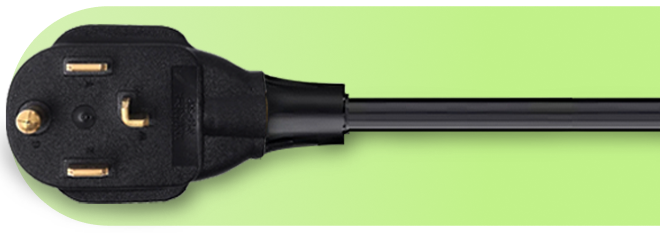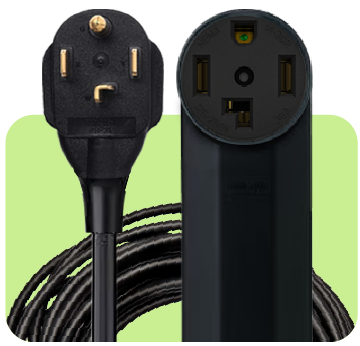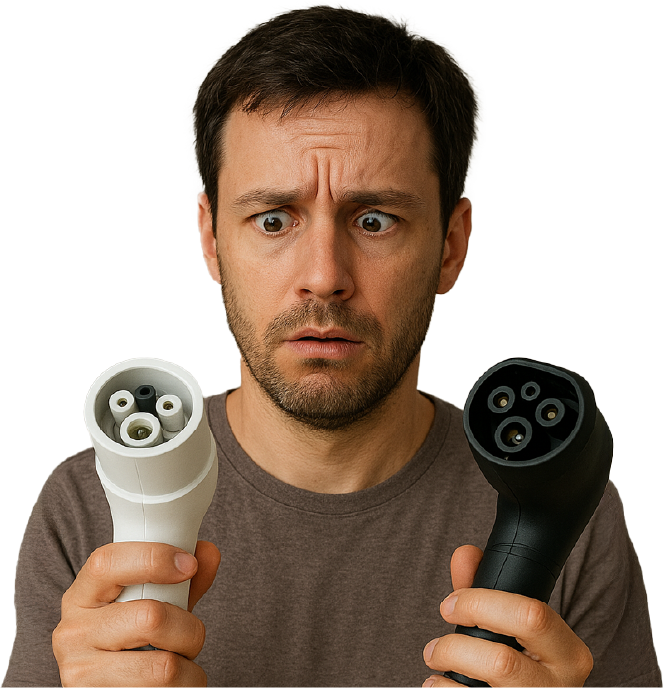Not sure about choosing a charger? Try our revamped Charger Finder!
Try our revamped Charger Finder!
- For Installations
- All our chargers come with a 1 year warranty
- Free Shipping


The NEMA 14-30 is a portable Level 2 EV Charger that delivers up to 24 amps (5.7 kW) of power, making it one of the most popular plug-in solutions that takes advantage of existing 240V outlets in your home. It works with all electric vehicles using the J1772 connector, and Tesla drivers can easily connect using a Tesla-to-J1772 adapter.
Choosing the right plug type depends on your outlet setup, charging needs, and installation environment.
| Plug Type | Power Output | Outlet Uses | Notes |
|---|---|---|---|
| NEMA 5-15 | 120V, 12A | Standard household outlet | Very slow charging (~3–5 miles/hr). Best for hybrids. |
| NEMA 6-20 | 240V, 16A | Older garages & workshops | Moderate Level 2 charging (~8–14 miles/hr). |
| NEMA 6-30 | 240V, 16A | Utility circuits, older setups | Up to ~20 miles/hr. |
| NEMA 14-30 | 240V, 24A | High-power household circuits | Typical dryer outlet |
| NEMA 6-50 | 240V, 40A | Workshops / garages | Fastest plug-in charging (25-32 miles/hr). 3-prong. |
| NEMA 14-50 | 240V, 40A | RV outlets, modern homes | Fastest plug-in charging (25-32 miles/hr). 4-prong. |
All EV Chargers come with a 12-month limited warranty and dedicated customer support. Whether you charge indoors or outdoors, at home or on the road, our NEMA 14-30 chargers are built for durability, safety, and peace of mind.
All J1772 EVs are compatible, including Tesla models with an adapter.
Yes, our chargers are weather-resistant and safe for outdoor use.
Both are 4-prong connectors, but the NEMA 14-30 is a 30-amp outlet (24A max charging), while the NEMA 14-50 is a 50-amp outlet (40A max charging) typical in RV and modern home setups, offering significantly faster charging speed.
If you already have a NEMA 14-30 outlet in the desired location, no—you simply plug in the charger. However, if you need to install the 14-30 outlet, we always recommend professional installation by a certified electrician to ensure safety and compliance with local codes.
A NEMA 14-30 charger delivers 24 amps of power at 240 volts, resulting in about 14–21 miles of range per hour of charging. This is significantly faster—up to 4 to 6 times quicker—than a standard 120V Level 1 charger, which only adds about 3–5 miles of range per hour.
Yes. While the NEMA 14-30 is limited to a 24-amp charging output, it provides a very reliable Level 2 speed that is sufficient for nearly all overnight charging needs. It can fully recharge most EVs from empty in 8 to 12 hours. As long as you charge overnight, this speed remains highly effective.

Not sure which charger fits your EV? Our Selector Tool filters by brand, model, and specs to give you instant, tailored recommendations.